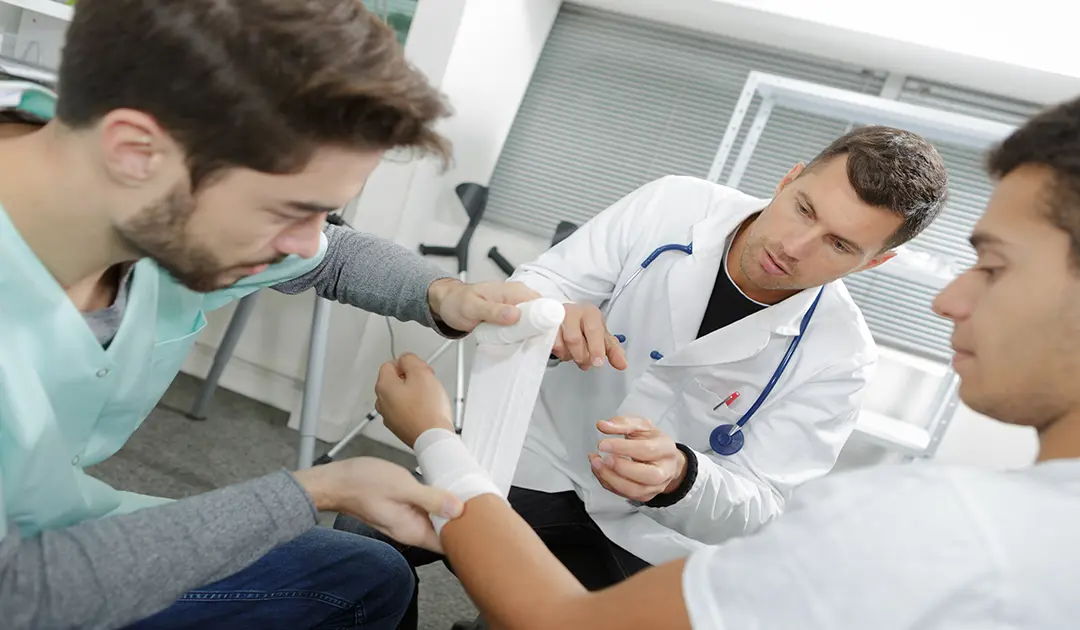Is First Aid Important When Delivering Restrictive Interventions?

As an instructor delivering physical intervention skills to staff in healthcare, education, social care and other service industry settings, it is important to be trained in first aid skills.
We must also update our skills regularly so that we build the confidence to be able to apply these skills if required. The RRN Training Standards state that all trainers delivering training in restrictive interventions must hold a current first aid certification, which includes immediate life support as a minimum requirement.
Therefore, the ‘Emergency First Aid at Work’ one-day programme must be completed. Different organisations may also require different levels of training. The RRN standards indicate that when training in restrictive interventions, there must not be more than 12 participants to one trainer. This also falls in line with first aid training, where if there are more than 12 participants, then a minimum of two trainers are required for a group of up to 18 people.
What are the main aims of first aid?
First aid aims to preserve life, prevent injury from worsening, aid recovery, relieve pain and protect the unconscious.
The training room
Before a trainer delivers a training programme, they must check that there are suitable first aid facilities and that equipment is available and easily accessible should it be required. Ideally a health declaration should be carried out with the participants involved, in addition to the trainer ensuring individuals are fit to carry out the training physically and mentally.
During the training, should there be a need for first aid treatment then immediate action should be taken to access medical help for any injuries sustained. After the incident all injuries should be recorded in accordance with the setting or service procedures and be reported as appropriate to the Health and Safety Executive.
Restrictive Interventions
“Restraint by its nature restricts a person’s liberty, but the frightening, overwhelming and traumatising nature of this experience can amount to degrading treatment, which is never lawful. Physical restraint can be humiliating, terrifying and even life-threatening. It should only be used as the last resort, when there is no other way of de-escalating a situation where someone may harm themselves or others” (Campbell, 2018).
The RRN states that training in restrictive interventions must include contingencies to reduce the likelihood of medical emergencies arising.
Do staff know how to monitor a person’s health status during and after a restraint? Including management of the person's airways and circulation.
Does the person in restraint have any medical conditions or injuries that may exacerbate the situation?
Do staff know when to let go?
We need to include on all training programmes what to do if a medical emergency arises. This can be done during situational application. Participants have a clear responsibility to be able to recognise any warning signs that may result in an emergency.
It is essential for all staff who use physical interventions to have first aid training as when situations do unfortunately arise, they can intervene quickly to prevent worsening. Being first aid trained can help us save lives and giving first aid immediately can help reduce recovery time.
Seni’s Law
Police held Seni face down. His hands and feet were restrained for a period of 45 minutes. The police missed the signs that Seni was in danger and didn’t treat the situation as a medical emergency believing he was faking it. Seni never regained consciousness and died four days later. Sadly, there are many examples of situations like this.
Find out more about the RRN Training Standards, Seni’s Law and CPI’s Safety Intervention training.